If you like this post, you might like a new post I have written on using the DEC’s Literacy Continuum to inform our Data Wall. This is the newest version of our whole-school literacy initiative. Here is the link.
The Why…
Three years ago, after interpreting our NAPLAN literacy results, we decided to implement a whole-school literacy initiative to improve our students’ ability to write effectively and their use of language conventions. We hoped that a whole-school focus might help support the students in their ability to construct texts, and improve their use of grammar, spelling and punctuation.
The What…
While we could have adopted a writing program available on the market, we decided that we wanted to develop our own approach to writing, with a focus on paragraph writing. One of the main reasons for this was that we had noticed that the language ou students used when referring to the structure of their work was inconsistent. What one teacher called a topic sentence, another teacher called a thesis statement an another an opening remark. So we developed our own approach, which we termed Higher Order Thinking Paragraphs, or HOT Paragraphs.
We wrote a program and built resources for our teachers to support them as they implemented this approach in their classrooms. We provided time for them to use the resources we had provided to create their own subject-specific examples and to write subject-specific questions and modelled responses to those questions. All of this formed a part of the work we were doing in our Professional Learning Teams (PLTs). These a cross curricular teams of teachers that meet fortnightly for 100 minutes of professional learning.
The How…
For the last three years, HOT Paragraphs have been the Term 1 focus of our PLTs. Each fortnight, PLT members would bring to their PLT paragraphs completed by their students in class. We would examine these as a group and mark them based on a simplified rubric. We intentionally kept the rubric very simple. We wanted to ensure that the feedback was both informative but not overly time-consuming. The rubric focused on Topic and concluding Sentences, Supporting Sentences, Grammar and Punctuation and Spelling. While the rubric is not without its limitations and weaknesses, it does provide a basis for interpreting and measuring student work. Below is the current iteration of the rubric:
Data Teams…
What we did slightly differently this year, was to combine what we were already doing with our HOT Paragraphs in our PLTs with the use of the Data Teams process. This process seeks to measure student data over time, revising our goals for different groups of students in the classroom based on their performance. We decided that each teacher would focus on one particular class they taught for this program.
The Pretest…
Our first task was to have students write a paragraph without any explicit teaching of the HOT Paragraph structure. We hoped that this would provide us with a baseline for the data we were collecting, so we could see the impact of the HOT Paragraph interventions. This year, we marked these paragraphs prior to attending our PLTs, so we could discuss the specific needs of our students in more detail during the PLT session.
Strengths and Weaknesses…
We recorded our data in Google Sheets, so all teachers could reflect on each others’ data. We also created a graph for each student so we could visually see their progress throughout the HOT Paragraph focus. We then looked at the strengths and weaknesses for each band level of students. This was a useful process as it allowed us to recognise that not all students in our classrooms had the same needs and that our interventions needed to be differentiated. This allowed us to then determine which intervention strategies would be the most appropriate for us to implement with our classes in the following fortnight. Below is the Strengths and Weaknesses Google Sheet we used.
SMART Goals…
Based on our interpretation of the strengths and weaknesses, we set SMART goals for our students. We wanted to have something specific to aim towards for our classes so we would know whether our intervention was successful. Below is the Google Sheet we used to help us set our goals for our classes.
The Intervention…
We used what we have learned about our students’ strengths and weaknesses to explicitly teach paragraph writing to our students, using the resources we had already created. Students were exposed to the lexicon we wanted them to use, gained an understanding of the elements required in a paragraph and were provided with practice questions.
The Cycle…
We continued this cycle for the remainder of the PLTs. Each session we charted our data, we examined our students’ work, looked for strengths and weakeness, set revised SMART goals and planned the next fortnight’s interventions. The discussions were incredibly fruitful and allowed us to spend quality time looking deeply at our students’ work.
Below is an example of one class’ Google Sheet, with their marks and percentages for each HOT Paragraph iteration.
Success???
We have seen some success with the use of HOT Paragraphs. In the first two years, we saw growth in our Yr 7 and 9 cohorts in the NAPLAN examinations, predominantly in the language conventions: spelling, grammar and punctuation. We think that we can attribute much of this to the focus that the HOT Paragraphs places on these elements, as well as the fact that our teachers felt more comfortable addressing these elements with their students then perhaps they did with sentence or paragraph structure.
Teacher feedback also suggests that they found the process beneficial for their students and themselves. We surveyed our teachers after the PLT with 95% of teachers recognising that the process had a positive impact on student outcomes; a third of whom felt that the impact was significant. All teachers found the Data Teams process to be effective, with two third suggesting that they found the process very effective. Below are some quotes from our teachers on the positive take aways from this PLT focus:
‘Identifying the strengths and weaknesses of each student in the class and tailoring activities according to these individual and class needs.’
‘Saw an improvement in student writing samples. Able to collaborate with other staff and gain insight into strategies they were using.’
‘HOT paragraphs has given me an indication of how articulate some of my students are and other students who may need some more assistance. HOT paragraphs can be used as a diagnostic tool for each student and the lessons I prepare.’
‘The ability to personally collect real data, over a period of time made the process more meaningful. The repetitive nature over an extended period also allowed deeper thinking, measuring and analysis about HOT Paragraphs.’
‘HOT paragraphs are something that we continually need to be doing in your classroom. This is reinforced by the fact that once I started talking to the students about the HOT paragraphs and the marking rubric their application and understanding improved.’
We also saw generally positive growth in most class data sets. Although this is not a completely objective instrument for measuring the efficacy of the work we have done, I think it still provides us with some positive take aways. Below are some examples of individual student graphs.
Conclusion…
Although this process certainly has its limitations and drawbacks, I think that over the past three years we have been met with some considerable success. HOT Paragraphs and the language we use to describe paragraph writing has now become a part of our school vernacular. As a result, HOT Paragraphs are no longer something that we ask our students to complete when it is a PLT focus. It has become the default approach to written responses for our school, helping to ensure that there is consistency among staff when we discuss our writing. I think that for us, HOT Paragraphs are here to stay.


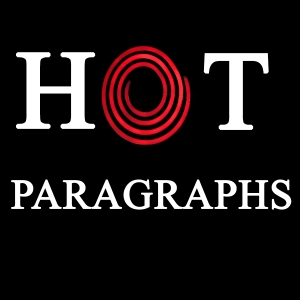
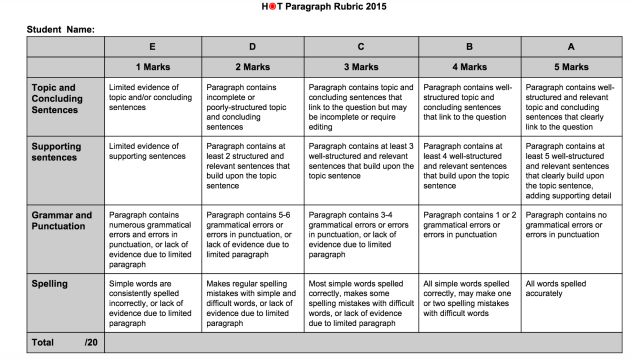
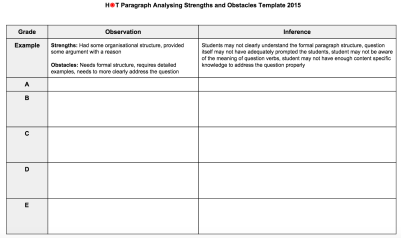
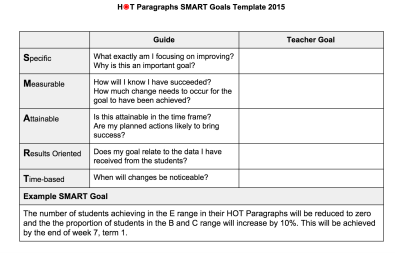
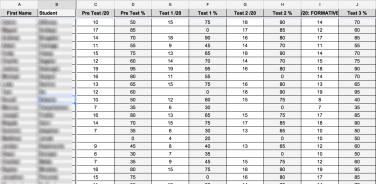
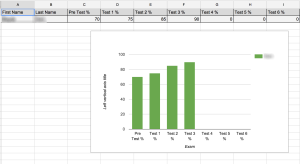

Reblogged this on Create Great Schools.
LikeLike
Thanks for the reblog Mark.
LikeLike
1 Pingback